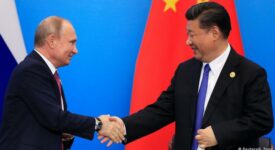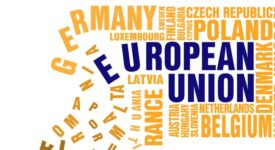In the years following the 2008 financial crisis, things seemed to be looking up for the renminbi. By the middle of 2015, almost 30% of China’s trade was being settled in renminbi; Hong Kong banks were holding some RMB 1 trillion worth of yuan-denominated deposits; and there was life in the dim sum bond market, with issuance running close to the equivalent of $10 billion per month. That year was also the year the International Monetary Fund (IMF) announced that the renminbi would become one of the currencies that underpin its own reserve asset, the special drawing right (SDR).
Almost by definition, this step seemed to confer on the renminbi something like the status of a global reserve currency. So the renminbi seemed, to most observers, to be firmly on a path toward real international relevance. But it turns out that all the enthusiasm back then about the renminbi’s future was guilty of what philosophers call a ‘category mistake’. What most people saw as evidence of the renminbi’s internationalization was, in fact, simply evidence of something else: an accumulation of speculative positions built on the expectation that the renminbi was going to rise in value. As the renminbi weakened after mid-2015, so too did the market’s willingness to own it and use it.
That’s hardly the mark of a global reserve currency. International investors want to own dollars or euros, for example, not just because they expect these currencies to strengthen, but because they offer legal security, ease of use, and critically, unrestricted convertibility into any other currency. And it is questions surrounding the renminbi’s full convertibility that are likely to stunt its growth as a global currency for the foreseeable future. The effort that Chinese regulators have recently made to open up China’s securities markets won’t do much to change things. Even if the inclusion of Chinese bonds in the three main global indies brings in a few hundred billion dollars worth of portfolio inflows over the next couple of years, this doesn’t have any real bearing on the renminbi’s future as a global reserve currency.
The good news, in the end, is that there is no law of nature that requires a reserve currency to be a fully convertible one; it simply depends on convention, or the norms that happen to prevail at a particular time. The Bretton Woods international monetary system that was set up at the end of the WWII, for example, had capital controls at its very center. The IMF’s carefully-phrased criterion for a currency to become part of the SDR basket was that it should be ‘freely usable’. What all this means is that it might be possible one day for China to have its cake and eat it, but it will probably take a Bretton Woods-like renegotiation of the international monetary system to get there. Don’t hold your breath.
In any case, history strongly advises patience when it comes to the emergence of new super-currencies. The United States overtook the UK as the world’s largest economy sometime around the mid-1850s. And though the dollar did start becoming a grown-up global funding currency after the WWI, it is worth remembering that even as late as 1947, sterling accounted for 87% of global foreign exchange reserves. None of this is to say that international use of the renminbi won’t rise in the future.
It almost certainly will, and especially in Asia, where trade integration with China has already increased movement among the region’s currencies and the renminbi. But it also seems quite likely that China will remain attached to its preference for “discretion” in its management of the capital account over the ‘rule’ that pretty much allows everyone to do everything with a reserve currency. As long as that is the case, we will have to keep waiting for the emergence of China’s ‘great currency’.
‚Waiting, and Waiting, for the Global Renminbi‘ – Expert Comment by David Lubin – Chatham House / The Royal Institute of International Affairs.







